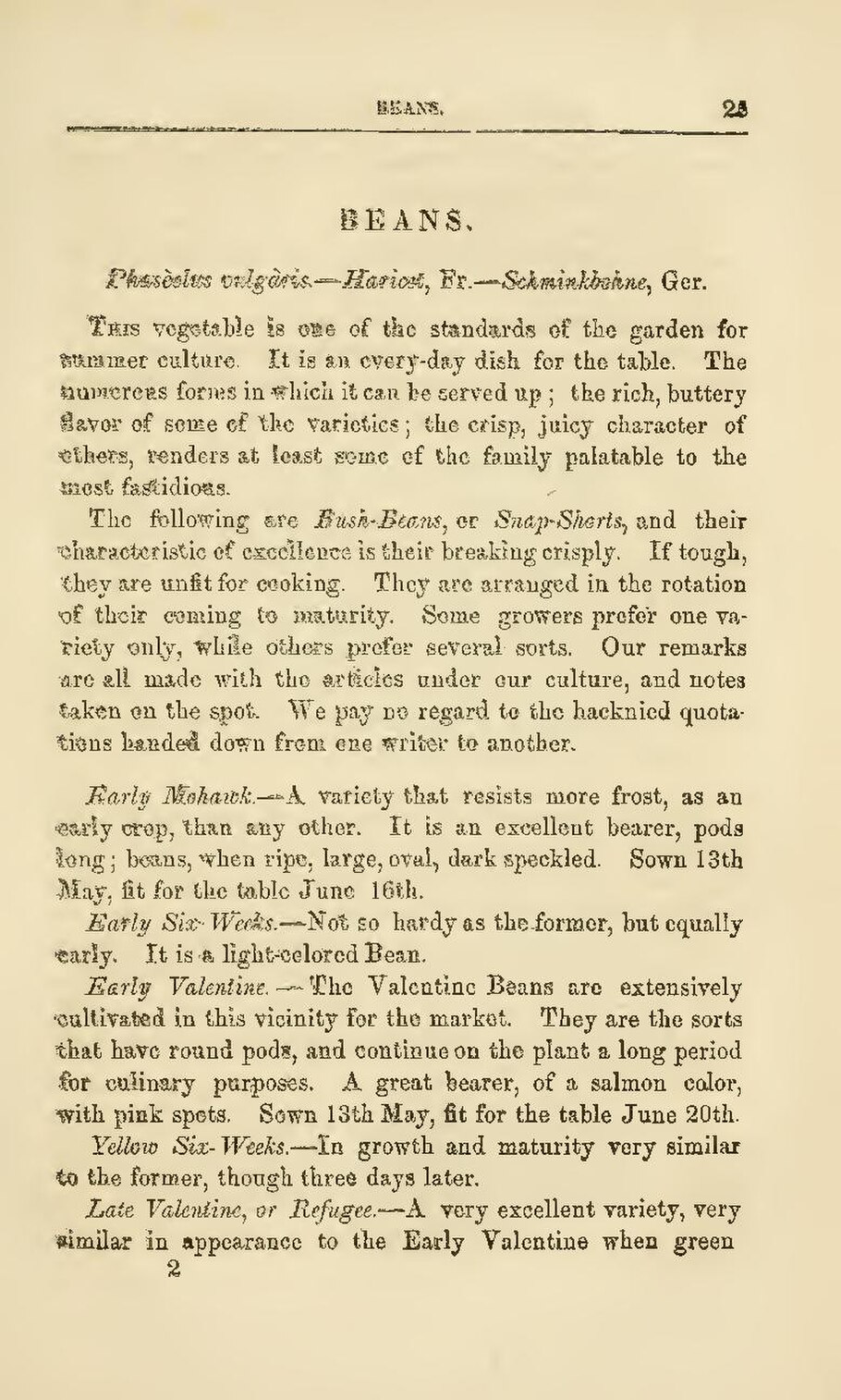BEANS.
Phasèolus vulgàris.—Haricot, Fr.—Schminkbohne, Ger.
This vegetable is one of the standards of the garden for summer culture. It is an every-day dish for the table. The numerous forms in which it can be served up; the rich, buttery flavor of some of the varieties; the crisp, juicy character of others, renders at least some of the family palatable to the most fastidious.
The following are Bush-Beans, or Snap-Shorts, and their characteristic of excellence is their breaking crisply. If tough, they are unfit for cooking. They are arranged in the rotation of their coming to maturity. Some growers prefer one variety only, while others prefer several sorts. Our remarks are all made with the articles under our culture, and notes taken on the spot. We pay no regard to the hacknied quotations handed down from one writer to another.
Early Mohawk.—A variety that resists more frost, as an early crop, than any other. It is an excellent bearer, pods long; beans, when ripe, large, oval, dark speckled. Sown 13th May, fit for the table June 16th.
Early Six Weeks.—Not so hardy as the former, but equally early. It is a light-colored Bean.
Early Valentine.—The Valentine Beans are extensively cultivated in this vicinity for the market. They are the sorts that have round pods, and continue on the plant a long period for culinary purposes. A great bearer, of a salmon color, with pink spets. Sown 13th May, fit for the table June 20th.
Yellow Six-Weeks.—In growth and maturity very similar to the former, though three days later.
Late Valentine, or Refugee.—A very excellent variety, very similar in appearance to the Early Valentine when green
